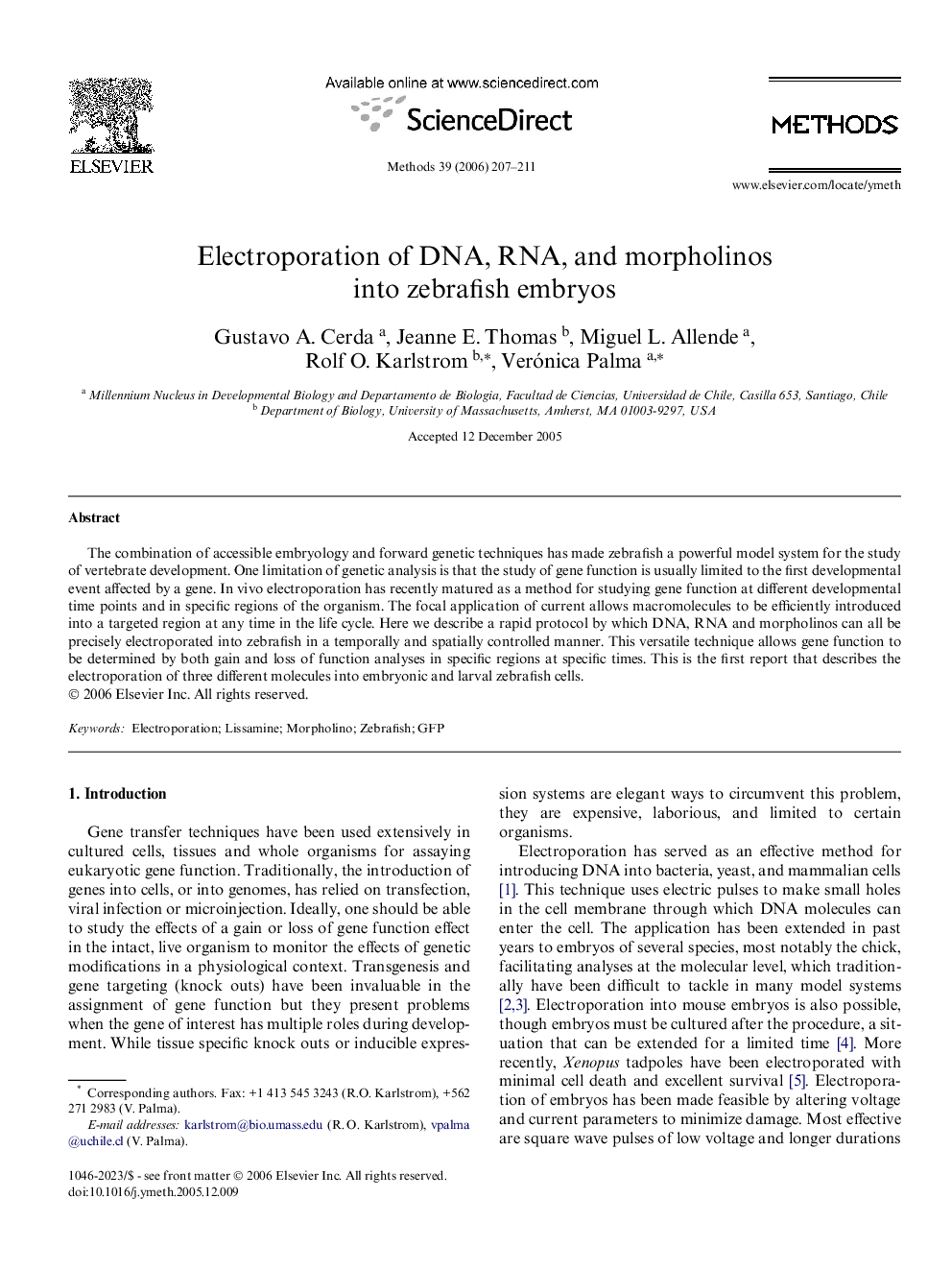| Article ID | Journal | Published Year | Pages | File Type |
|---|---|---|---|---|
| 1994599 | Methods | 2006 | 5 Pages |
The combination of accessible embryology and forward genetic techniques has made zebrafish a powerful model system for the study of vertebrate development. One limitation of genetic analysis is that the study of gene function is usually limited to the first developmental event affected by a gene. In vivo electroporation has recently matured as a method for studying gene function at different developmental time points and in specific regions of the organism. The focal application of current allows macromolecules to be efficiently introduced into a targeted region at any time in the life cycle. Here we describe a rapid protocol by which DNA, RNA and morpholinos can all be precisely electroporated into zebrafish in a temporally and spatially controlled manner. This versatile technique allows gene function to be determined by both gain and loss of function analyses in specific regions at specific times. This is the first report that describes the electroporation of three different molecules into embryonic and larval zebrafish cells.
